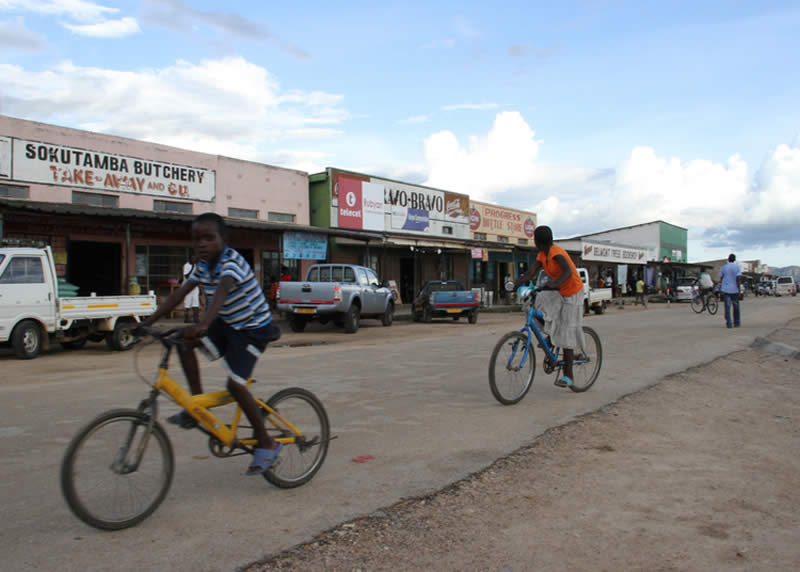
The Sunday Mail

The population in urban areas increased from an estimated 3,695 million in 2002 to 4,104 million in 2012, a factor that is straining key infrastructure such as water reticulation systems and road networks. These challenges continue to increase despite policies crafted by the Government during the late 1980s to discourage rural to urban migration by establishing growth points as centres of rural development.
The policy sought to reduce the numbers of people moving from rural areas to cities and towns in search of better living conditions and employment.
Census figures showing a growing rural population have led to calls by town planners to revive the concerted campaign to develop growth points.
The future economic development prospects of Zimbabwe’s growth points are closely linked to the overall regeneration of the productive capacity of communal lands in the respective 55 districts.
As a starting point, considering the fact that growth point policy is a long forgotten initiative, it is suggested that the Government should undertake a major evaluation exercise of all the rural growth points in order to be able to formulate revival strategies based on current resource inventories.
With indications Zimbabwe’s population is increasing in rural areas, the future of most growth points lies increasingly in the solutions put forward for utilisation of local natural resources through application of comparative advantage and the agrarian productive elements of the communal sector.
If those having land are given Government support in terms of subsidies and training, then growth points will prosper as marketing and production outlets.
For those districts where agriculture performs well or is likely to thrive if enough support is given to farmers, establishment of seed grading and packing industries will be an appropriate move.
The advantages of such an industry include an existing demand among all communal farmers for a variety of types of seed for their farming operations.
For example, fruit and vegetable processing industries can be opted for in eastern districts of the country where there is large-scale organised fruit farming.
The area also has a high agro-ecological potential, high rainfall and rich soils.
Moreover, in areas where there is high production of oil seeds such as groundnuts, sunflowers and others, there is a possibility of developing small-oil processing plants which require a guarantee of inputs from producers.
In places like Beitbridge which is in Matabeleland South where there is pronounced beef production, construction of abattoirs and associated industries can be the best strategy of spearheading economic development.
Also, this will have to take advantage of the proximate distance to the neighbouring South Africa where some of the beef can be exported.
Agro-based industries including food processing industries and cotton processing may be suitable for growth points such as Gokwe.
Growth points in rural areas such as Nyika, Jerera and Mataga, where maize is intensively grown, may, for example, be suitable for establishment of agro-based industries.
The saw-milling and furniture industries could flourish at growth points such as Tsholotsho in Matabeleland North and Nyanga in the Eastern Highlands where there is a lot of timber available.
In fact, there is no need to wait for industries to relocate from town to these growth points.
What should happen is local people should be encouraged and supported to embark onto these businesses.
One such incentive to promote non-farming activities such as micro-industries is a relatively low-wage rate for the small industries, to enable them to be competitive.
Regarding what has been happening on the ground, it is important to appreciate that not all centres could be viable growth points and therefore there is a need to identify existing potentials which should then determine appropriate policies to be developed and adopted.
The ‘‘blanket’’ approach would not serve a useful purpose given the differing potentials of the centres.
On this regard, future public sector investment should be geared to specific targets and preferably to productive enterprises in specific growth points.
Simply put, this means that rural policy must focus on a particular place.
This means any strategy to revive rural areas must begin with the assets, aspirations, and challenges of the place to be developed.
Linked to the issue of specific area development approach, policies must be holistic and comprehensive, focusing on the social, cultural and environmental well-being of the place as well as the economic.
Local communities will need much greater support from the educational system than they have received in the past.
Given the multiplicity of development policies which have come and gone, probably without producing expected results, there is a need to tap the role of local authorities (specifically district councils for rural growth points) in the promotion and management of development in these designated centres.
These local authorities must shift their roles as development agents which partner with the private sector to create business in their respective growth points.
With people increasing in rural areas, it becomes imperative that development is stimulated in growth points to enable the rural folk to find employment as well as access all essential services. — Additional reporting by In-Depth Reporter.
Innocent Chirisa is a Town Planning expert




